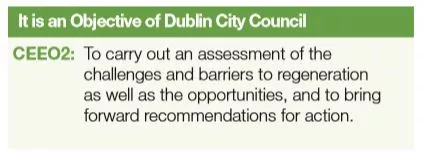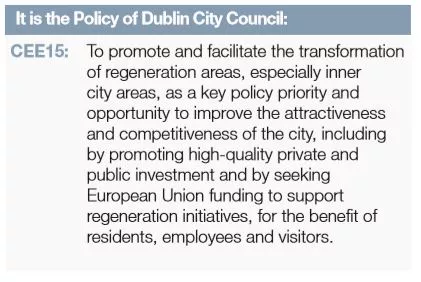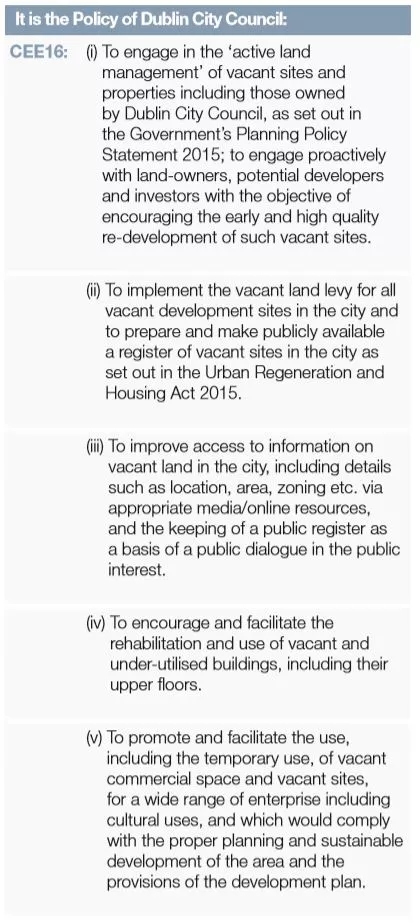6.5.4 Regeneration/Vacant Land/Active Land Management
6.5.4 Regeneration/Vacant Land/Active Land Management
The City Council has carried out a vacant land study of the inner city that identified more than 280 vacant sites totalling more than 60 hectares of vacant land. More than 100 of these sites are in the city centre zoned area (Z5). This is a great challenge and opportunity for the city. These extensive areas of vacant lands are potentially a great international competitive advantage for Dublin.
Many of our international competitor cities have fully developed centre city areas and have little space for the expansion of uses which need/prefer to locate in centre city areas, such as digital economy companies, hotels, and student accommodation.
The City Council made a detailed submission to government on the negative impacts of vacant land on the economy of the city and made a proposal for a vacant land levy. The Urban Regeneration and Housing Act 2015 provides for a levy on vacant sites and requires the City Council to prepare a register of vacant sites and to make it publicly available, including on its website.
The speedy re-development of extensive vacant/under-utilised sites, especially in the city centre zoned area, is critical to sustainable development. Putting in place a critical mass of investment and development in the short-term is essential to break the negative cycle of underdevelopment and to overcome the barriers to progress that have existed.
The City Council will look positively on appropriate temporary uses as interim solutions for vacant land and properties.


